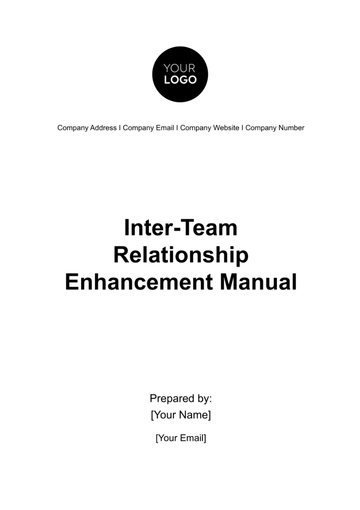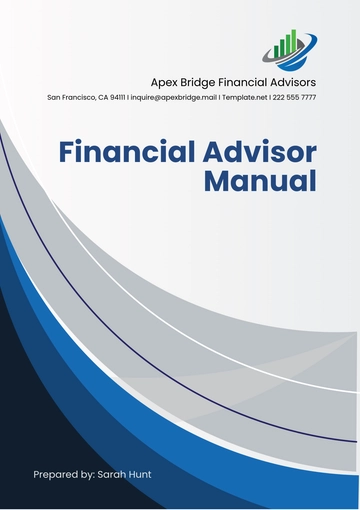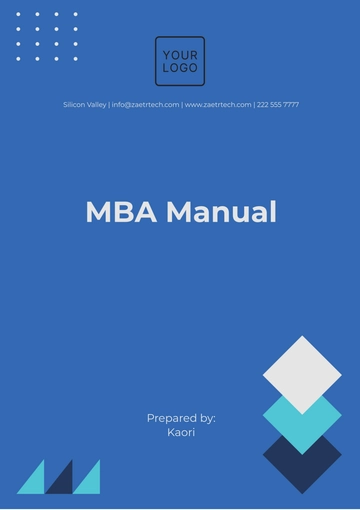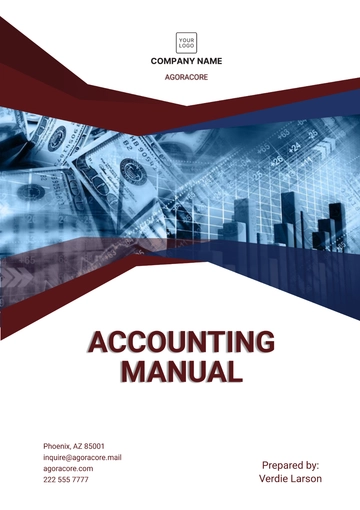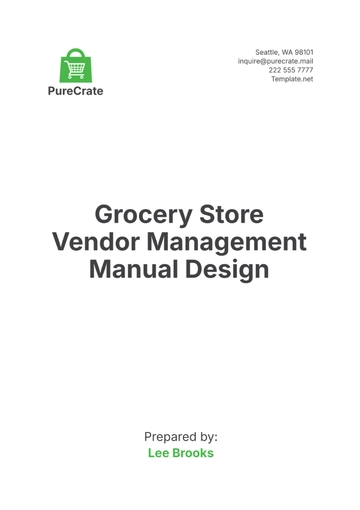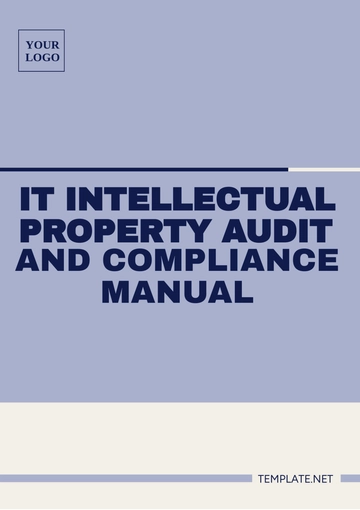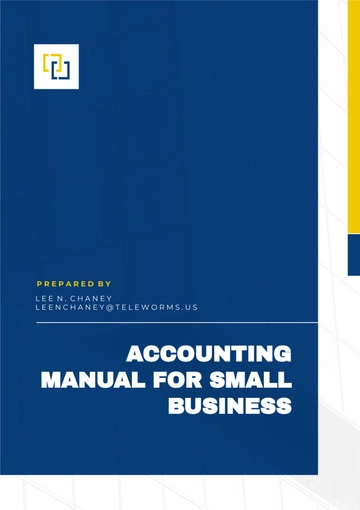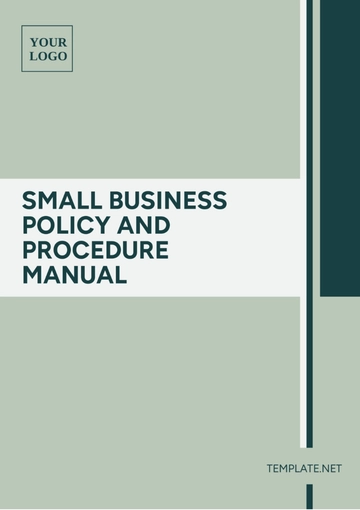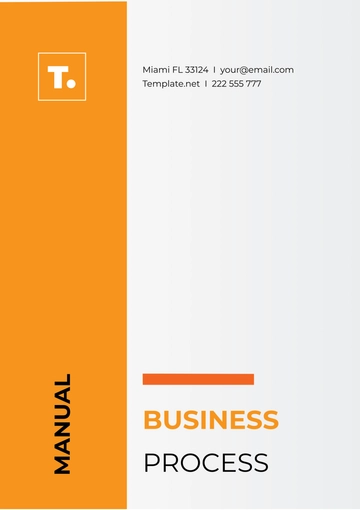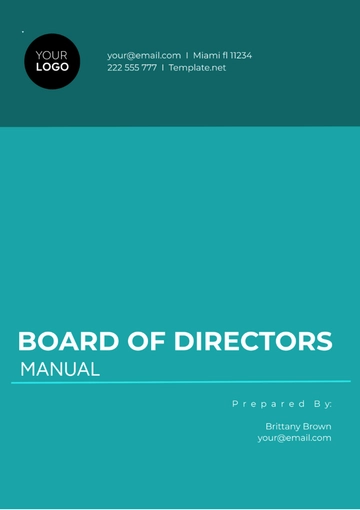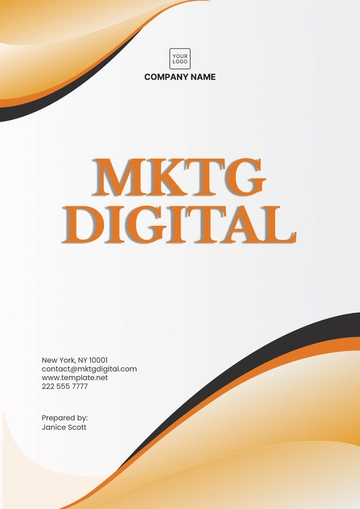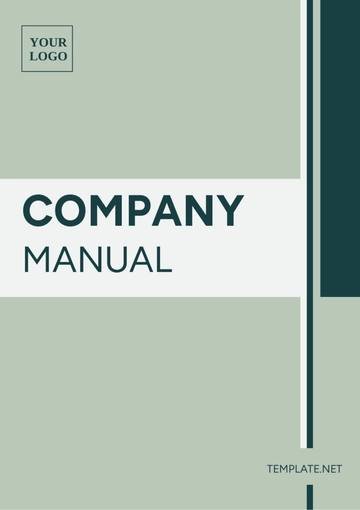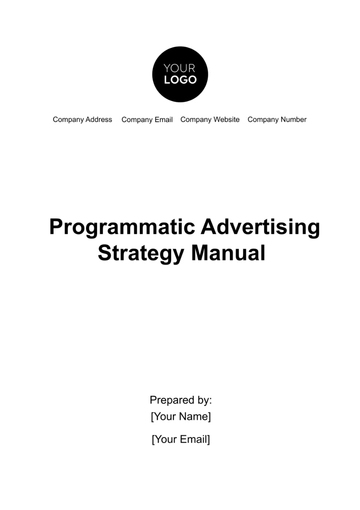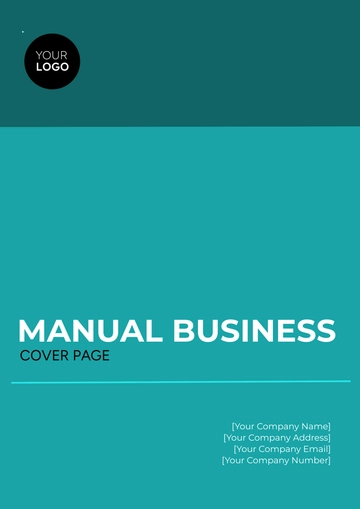Free Startup Financial Management Manual
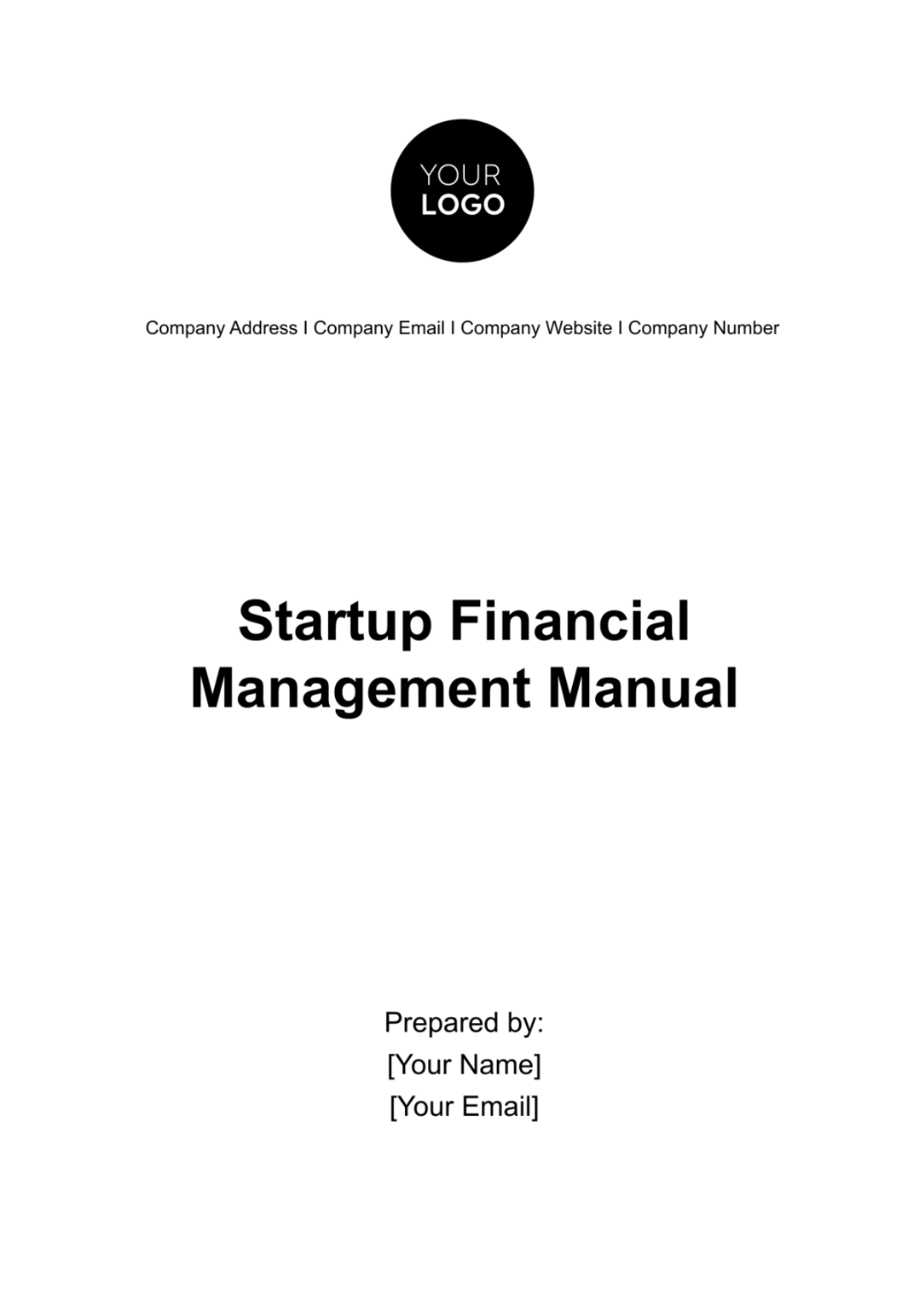
I. Introduction
Welcome to the Startup Financial Management Manual, a comprehensive guide designed to navigate the intricacies of financial management within our startup. This manual serves as a foundational resource for all stakeholders, providing clarity on our financial processes and procedures. By adhering to the principles outlined here, we aim to foster transparency, accountability, and sound decision-making across our organization. Through this manual, we empower our team members to understand and contribute to the financial health and success of our company. We encourage active engagement with this resource, as we collectively strive for excellence in financial management to drive our business forward.
II. Organizational Overview
Company Mission and Vision
Our mission is to revolutionize the way people interact with technology, guided by a vision of becoming a global leader in innovative software solutions. These fundamental principles shape our strategic direction and inform our decisions at every level of the organization.
Organizational Structure
With a flat organizational structure, we prioritize collaboration and agility, allowing us to respond quickly to market opportunities and challenges. Our leadership team comprises seasoned professionals who bring diverse expertise and perspectives to guide our growth journey.
Key Stakeholders
Our success is intertwined with the well-being of our stakeholders, including investors, employees, customers, and the communities we serve. We are committed to fostering strong relationships built on trust, respect, and mutual benefit.
III. Financial Planning and Budgeting
Importance of Financial Planning
Financial planning is the compass that guides our journey, enabling us to set ambitious yet achievable goals and allocate resources effectively to realize them. It provides the roadmap for our financial success and ensures alignment between our strategic objectives and resource allocation.
Budgeting Process
Our budgeting process is collaborative and iterative, involving input from all departments to ensure alignment with our business priorities and objectives. Through rigorous analysis and forecasting, we develop realistic budgets that serve as benchmarks for monitoring our financial performance and making informed decisions.
Long-Term Financial Planning
In addition to short-term budgeting, we engage in long-term financial planning to anticipate future challenges and opportunities and chart a course for sustainable growth. This involves scenario planning, sensitivity analysis, and strategic investment decisions to position our company for long-term success.
IV. Cash Flow Management
Importance of Cash Flow Management
Cash flow is the lifeblood of our business, allowing us to meet our financial obligations, invest in growth opportunities, and weather economic uncertainties. Effective cash flow management is essential for maintaining liquidity and sustaining our operations.
Cash Flow Forecasting
Through robust cash flow forecasting, we anticipate fluctuations in cash inflows and outflows, allowing us to proactively manage our liquidity position and mitigate cash flow risks. This enables us to make strategic decisions with confidence and avoid potential cash crunches or excess cash idle.
Working Capital Management
We optimize our working capital to ensure efficient use of resources while balancing the trade-offs between liquidity and profitability. By managing our inventory, receivables, and payables effectively, we minimize working capital requirements and enhance our overall financial performance.
V. Financial Reporting
Overview of Financial Reporting Requirements
Financial reporting provides stakeholders with insights into our financial performance, position, and prospects, fostering transparency and accountability. We adhere to regulatory standards and industry best practices to ensure the accuracy and reliability of our financial reports.
Types of Financial Statements
Our financial statements, including the income statement, balance sheet, and cash flow statement, provide a comprehensive view of our financial health and performance. These statements are prepared in accordance with generally accepted accounting principles (GAAP) and reflect the economic reality of our business operations.
Preparation and Presentation Guidelines
We follow rigorous procedures and standards in preparing and presenting our financial statements to ensure clarity, consistency, and comparability. Our financial reporting team adheres to strict timelines and quality control measures to uphold the integrity and credibility of our financial information.
VI. Fundraising and Capital Management
Funding Sources for Startups
We explore various funding sources, including equity financing, debt financing, grants, and crowdfunding, to support our growth initiatives and strategic objectives. Each funding option is evaluated based on its cost, risk, and alignment with our long-term goals.
Investor Relations
Building and nurturing relationships with investors is essential for accessing capital, gaining strategic insights, and enhancing our credibility in the market. We maintain open and transparent communication channels with investors, providing regular updates on our performance, milestones, and future plans.
Capital Structure Management
We carefully manage our capital structure to optimize our cost of capital, maintain financial flexibility, and support our growth aspirations. This involves balancing our use of equity and debt financing while considering factors such as leverage, interest rates, and repayment terms.
VII. Accounting Procedures
Overview of Accounting Principles
Our accounting practices are guided by established principles and standards to ensure accuracy, reliability, and transparency in our financial reporting. We adhere to generally accepted accounting principles (GAAP) and stay abreast of emerging accounting trends and developments.
Chart of Accounts
The chart of accounts serves as the backbone of our accounting system, providing a structured framework for recording and classifying financial transactions. We customize our chart of accounts to reflect the unique characteristics and needs of our business, enabling us to track and analyze financial data effectively.
Recording Financial Transactions
We maintain accurate and complete records of our financial transactions, ensuring that each transaction is properly documented, authorized, and recorded in accordance with our accounting policies and procedures. This enables us to generate reliable financial reports and comply with regulatory requirements.
Accounts Payable and Receivable Management
Effective management of accounts payable and receivable is essential for optimizing our cash flow and working capital. We establish clear payment terms with our suppliers and credit policies with our customers to minimize risk and improve cash flow efficiency.
Inventory Management
We implement inventory management practices to control costs, minimize stockouts, and maximize inventory turnover. This involves forecasting demand, monitoring inventory levels, and implementing inventory control measures to optimize our inventory management processes.
Fixed Asset Management
We manage our fixed assets throughout their lifecycle, from acquisition to disposal, to ensure they are utilized efficiently and maintained properly. This involves tracking asset values, recording depreciation, and conducting periodic asset inspections to safeguard our investments and comply with accounting standards.
VIII. Financial Risk Management
Identification of Financial Risks
We identify and assess financial risks that may impact our business operations, financial performance, and strategic objectives. These risks include market risk, credit risk, liquidity risk, operational risk, and regulatory risk.
Risk Assessment and Mitigation Strategies
We develop risk mitigation strategies to manage and mitigate our financial risks effectively. This may involve implementing internal controls, diversifying our investments, hedging against market fluctuations, and maintaining adequate insurance coverage.
Market Risk Management
We monitor market trends and fluctuations in interest rates, exchange rates, and commodity prices to anticipate and respond to market risks proactively. We adjust our investment and financing strategies accordingly to minimize our exposure to market risk.
Credit Risk Management
We assess the creditworthiness of our customers and counterparties and establish credit limits and terms to mitigate credit risk. We monitor our accounts receivable and credit exposures regularly and take appropriate actions to address potential credit issues.
Operational Risk Management
We identify and address operational risks related to our business processes, systems, and infrastructure. We implement controls, procedures, and contingency plans to mitigate operational risks and ensure business continuity.
Regulatory Risk Management
We monitor changes in regulatory requirements and compliance obligations that may affect our business operations and financial reporting. We stay informed about new regulations and standards and adjust our policies and procedures accordingly to maintain compliance.
IX. Internal Controls and Compliance
Importance of Internal Controls
Internal controls are essential for safeguarding our assets, ensuring the accuracy and reliability of our financial reporting, and preventing fraud and mismanagement. We establish and maintain effective internal controls to mitigate risks and promote accountability and transparency.
Establishment of Internal Control Framework
We establish an internal control framework based on industry best practices and regulatory requirements. This framework includes policies, procedures, and mechanisms for authorization, segregation of duties, and monitoring of transactions.
Segregation of Duties
We segregate duties among our employees to prevent conflicts of interest and minimize the risk of errors and fraud. We ensure that no single individual has control over all aspects of a transaction and that critical tasks are performed by multiple individuals.
Compliance with Financial Regulations and Standards
We comply with applicable financial regulations, accounting standards, and reporting requirements to maintain legal and regulatory compliance. Our finance team stays abreast of changes in regulations and standards and ensures our policies and procedures align with current requirements.
Fraud Prevention and Detection
We implement fraud prevention measures, such as employee training, whistleblower hotlines, and regular audits, to deter and detect fraudulent activities. We investigate any suspected instances of fraud promptly and take appropriate disciplinary and legal actions as necessary.
X. Financial Policies and Procedures
Expense Management Policies
We have policies and procedures in place to control and monitor our expenses effectively. These policies cover expense authorization, reimbursement, and documentation requirements to ensure compliance with budgetary constraints and internal controls.
Revenue Recognition Policies
We follow revenue recognition policies that adhere to accounting standards and reflect the timing and certainty of revenue recognition. Our revenue recognition policies consider factors such as delivery of goods or services, customer acceptance, and collectability of payments.
Financial Decision-Making Authority
We define the delegation of financial decision-making authority within our organization to promote accountability and streamline decision-making processes. We establish clear thresholds and approval processes for financial transactions, investments, and expenditures.
Procurement Policies
We have procurement policies and procedures that govern the acquisition of goods and services from suppliers. These policies ensure transparency, fairness, and competitiveness in our procurement process and mitigate the risk of fraud, collusion, and conflicts of interest.
Travel and Entertainment Expense Policies
We establish guidelines for managing travel and entertainment expenses incurred by our employees. These policies cover permissible expenses, approval procedures, and documentation requirements to control costs and ensure compliance with company policies and tax regulations.
XI. Financial Management Tools and Systems
Accounting Software Selection and Implementation
We use accounting software to streamline our financial management processes, automate routine tasks, and enhance our reporting capabilities. We select accounting software that meets our business needs, integrates with our other systems, and complies with industry standards.
Financial Modeling Tools
We utilize financial modeling tools to perform scenario analysis, forecast financial performance, and evaluate investment opportunities. These tools help us make informed decisions and assess the impact of various factors on our financial outcomes.
Expense Tracking Systems
We implement expense tracking systems to monitor our expenses, track spending patterns, and control costs effectively. These systems provide real-time visibility into our expenditures and enable us to identify areas for cost savings and optimization.
Cash Flow Forecasting Tools
We utilize cash flow forecasting tools to project our future cash flows and assess our liquidity needs. These tools help us manage our cash flow more effectively, anticipate cash shortages or surpluses, and make strategic decisions to optimize our cash reserves.
XII. Financial Management Best Practices
Key Principles of Financial Management
We adhere to key principles of financial management, such as prudence, transparency, accountability, and integrity. These principles guide our decision-making processes and ensure that we act in the best interests of our stakeholders.
Benchmarking and Performance Metrics
We benchmark our financial performance against industry peers and best practices to identify areas for improvement and drive performance excellence. We establish performance metrics and key performance indicators (KPIs) to track our progress and measure our success.
Continuous Improvement Initiatives
We continuously review and refine our financial management processes, policies, and systems to adapt to changing business conditions and emerging trends. We solicit feedback from our stakeholders and encourage innovation and creativity in our approach to financial management.
- 100% Customizable, free editor
- Access 1 Million+ Templates, photo’s & graphics
- Download or share as a template
- Click and replace photos, graphics, text, backgrounds
- Resize, crop, AI write & more
- Access advanced editor
Introducing the Startup Financial Management Manual Template, available on Template.net. This comprehensive guide is your editable and customizable solution for navigating financial complexities in your startup. With our AI Editor Tool, effortlessly tailor the manual to your unique needs. Empower your team with a resource that streamlines financial processes, ensuring clarity and strategic decision-making from day one.
